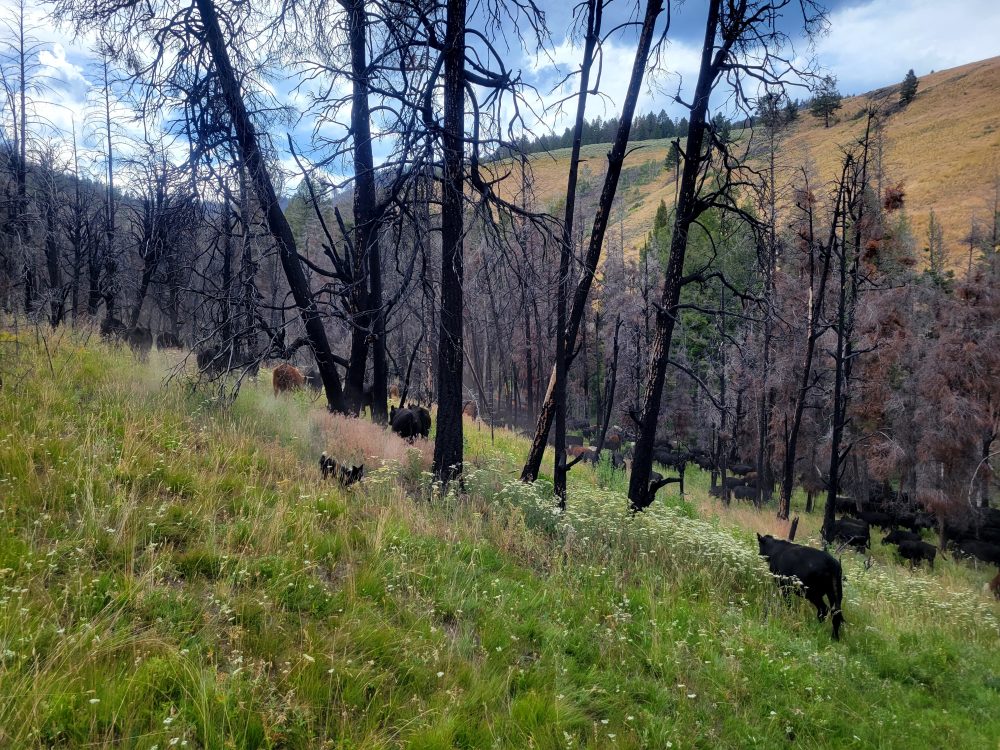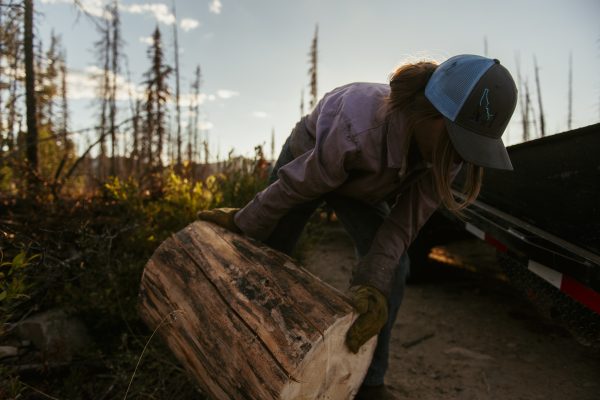
I’m writing this before sunup, and the sky is just beginning to glimmer with a rosy orange glow of another smoky morning. It’s really nice to see that some of the smoke left our country for Montana and Canada (sorry guys!) but I’m sure it will be back again by tonight if it doesn’t rain. A new forest wildfire about 25 air miles away blew up over the last two days and it is gobbling up insect-killed timber as if it were doused in gasoline.
Back in my firefighting days, I’d been on fires like this, and all you can really do is watch. Two to three hundred foot flame lengths are a little intimidating when you’re standing there with a shovel or Pulaski (grubbing tool) in your hand.
I vividly recall one time I was on steep timbered terrain. I was a line scout’s assistant, slogging up a mountainside in what we called jackstraw timber: thick green standing timber with up to 5 feet of decades-old bug killed downed logs in the under story. In those days, there was no satellite imagery, google maps, or GPS. Fire managers relied completely on old aerial photos, airplanes and line scouts like us to hike the country on foot to map fire perimeters.
We heard the fire before we saw it: an ominous, low, ground-shaking roar. It sounded like Boeing was testing jet engines in the valley beyond the ridge. When we reached the greasy of the ridge, we froze, speechless, transfixed by the terrible spectacle before us.
There, about 400 feet below and across a meadow, a wall of raging fire some 250 feet high roared toward us up the mountainside. We could see entire portions of trees up to 20 feet in length being thrown up in the convection column. The wind whipped from our backs over the ridge top, as if attempting to push us into the maelstrom, and we had to hold our hard hats tight to our heads to keep them from getting sucked downward.
The fire was inexhaustibly hungry, not only for fuel, but for oxygen, and that 60 mile an hour wind from our backs was created by its insatiable appetite for it. We felt the searing heat, not from the air, but from the radiation. We could see why nearby trees would spontaneously combust even before fire reached their foliage. We only stood there for seconds as we tried to take it in. It felt like minutes.
My boss only needed to say one word: “Run!”
And run we did. I don’t think I’ve run that fast since, as we almost floated over all that jack-strawed downfall. Is was a good thing I had been working in the woods all summer and was somewhat of a wood rat.
Little did I know that some 20 years later, I would be herding our very own cattle just 5 miles away on the Alderspring ranges. It too had burned…many times over. While wearing my forestry hat, I conducted tree boring studies showing that fire swept through these central Idaho forests on average of every 40 years. I had data covering nearly 500 years. Fascinating, and clearly showing the importance of fire in our forests and our nearby grass ranges.
Fire cycles key nutrients back into our soils by freeing those tied up in dead or dying trees in areas where years of fire suppression allowed forests to become much more densely stocked than ever before. Much of the moisture that falls as winter precipitation in these dense forests is also intercepted and lost through direct evaporation before it even hits the ground. This is key for not only the plants above the ground, but for the soil organisms below it.
What all this means is that the lack of fire in our mountains has caused an incredible lack of diversity in both plants and animals. And if you remember, diversity is one of the keys to the wellness… and even ours as we partake of these foragers in these wild landscapes.
So when you hear about these western fires know that in some cases they are rejuvenating the cycle of wild diversity. But in other areas, years of fire suppressant has set us up for catastrophic fire. My heart grieves for those whose homes or animals were burned in wildfires. And I sure take a deep breath of relief when cowboys Josh and Daniel come home with another few head of cattle from the range.







Leave a Reply